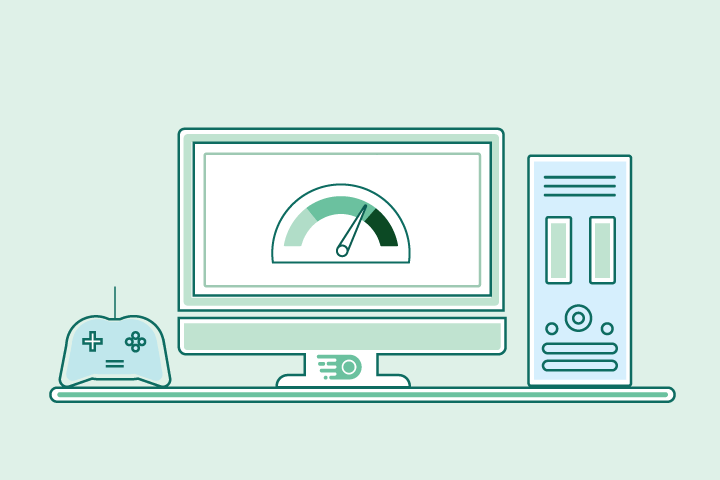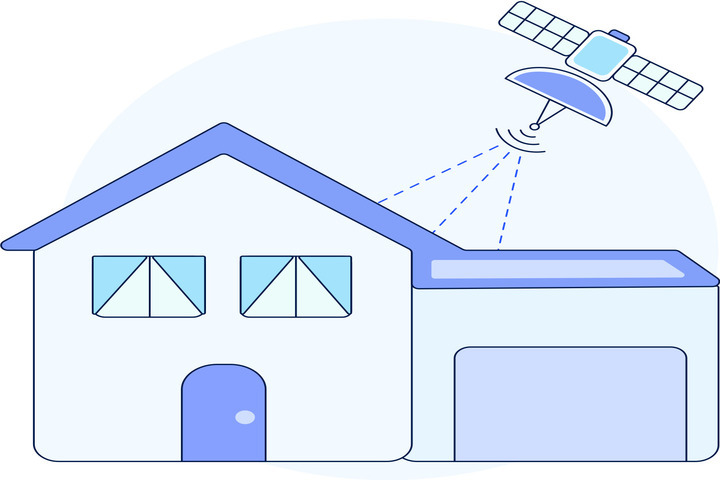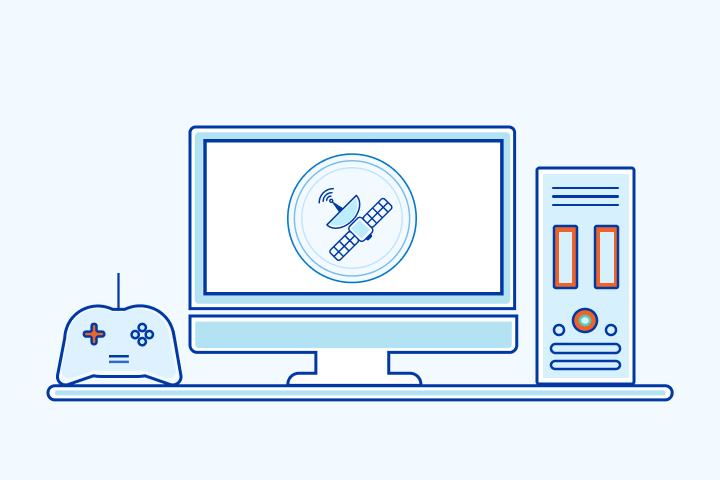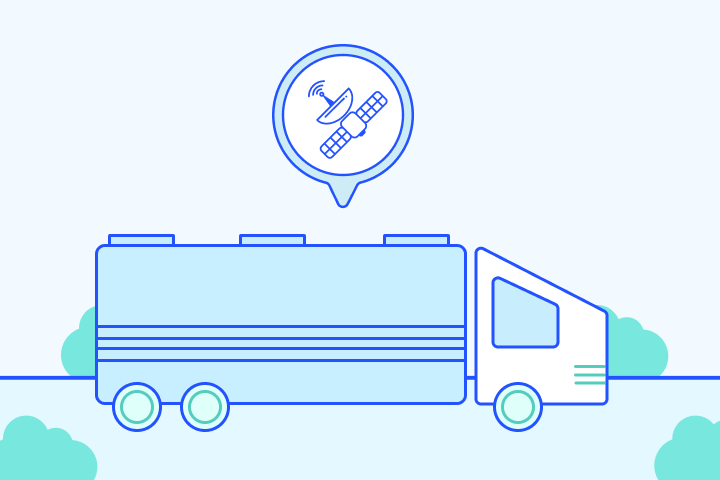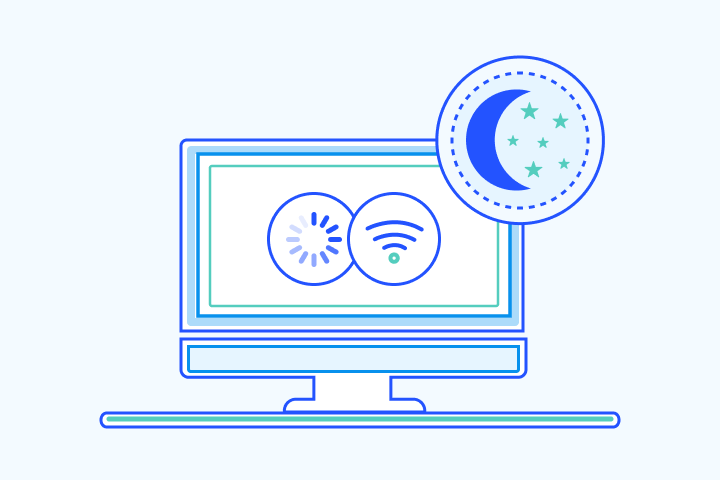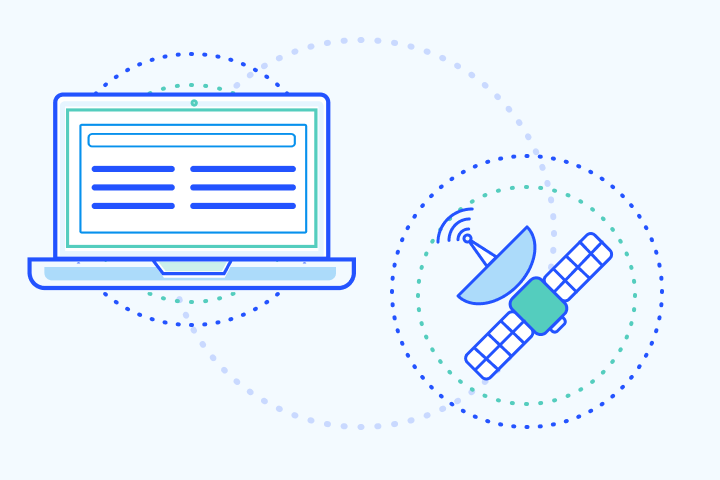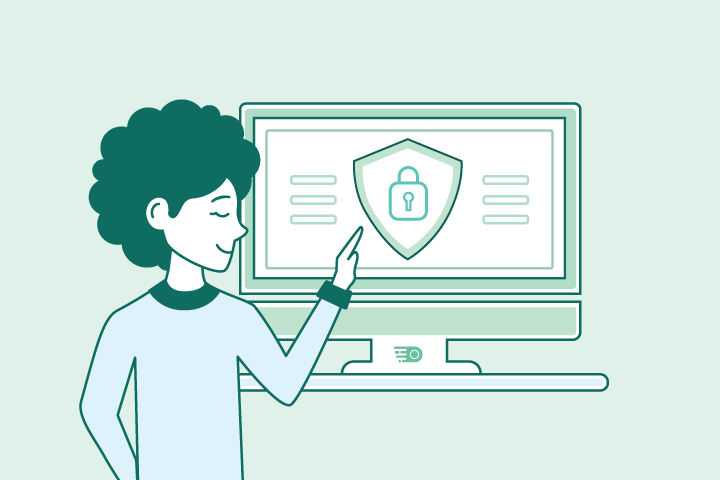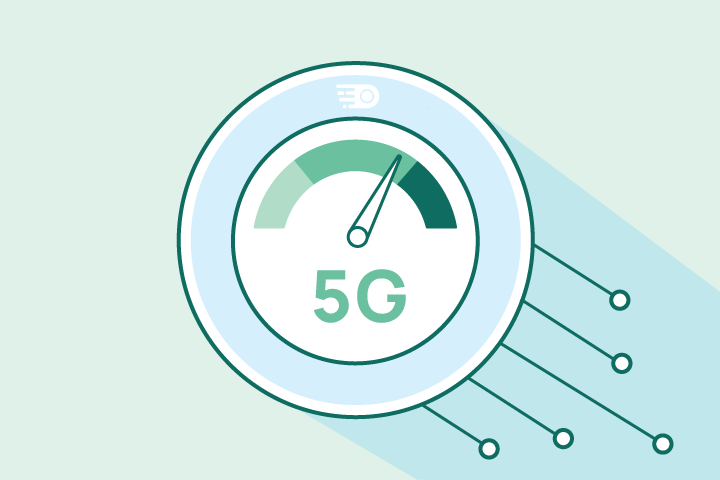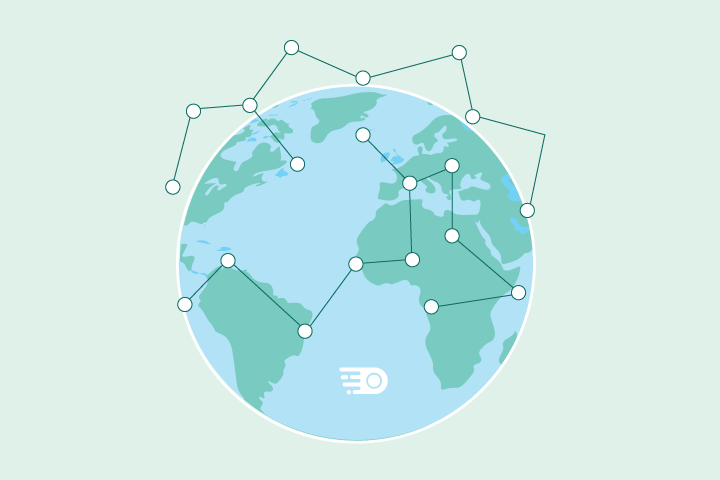Best Portable Internet Providers 2025
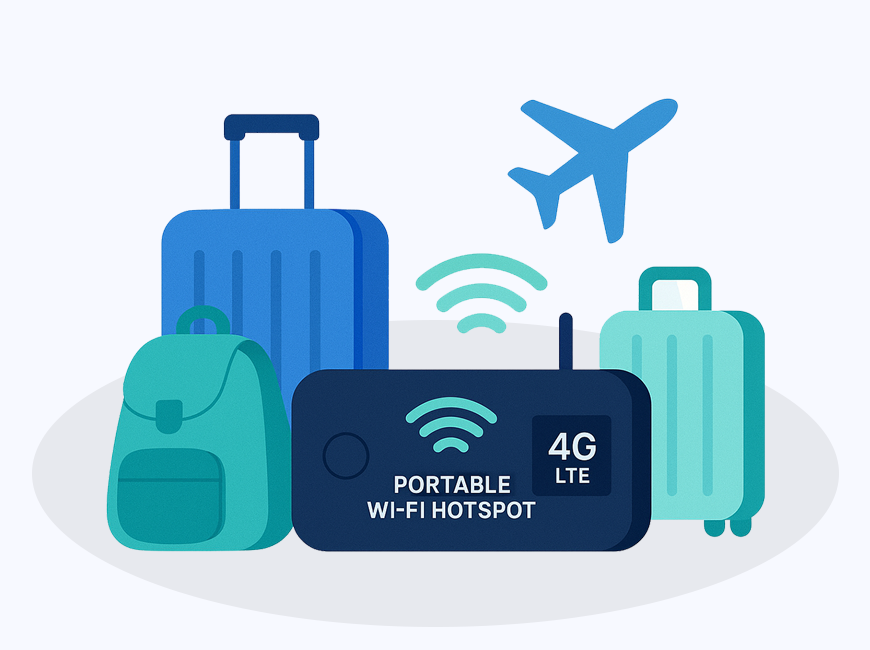
HighSpeedOptions prides itself on providing honest, quality content. While we may be compensated when you make a purchase through links on our site, all opinions are our own. Here's how we make money.
Table of Contents
Remote work, frequent travel, and the need for reliable internet access anywhere have made portable internet solutions more essential than ever. Whether you’re working from a coffee shop, camping in the mountains, or dealing with a home internet outage, having a backup connection can keep you productive and connected.
This guide covers everything you need to know about portable internet in 2025. Get a better understanding of the technologies (portable internet, mobile hotspots, and portable Wi-Fi) and how to choose the best providers and devices for your budget and needs.
What Is Portable Internet?
Portable internet refers to mobile connectivity solutions that provide internet access through cellular networks rather than fixed broadband connections. The most common types include:
Mobile Hotspot Devices (Mi-Fi)
Mi-Fi devices are palm-sized units that create a WiFi network using cellular data, allowing multiple devices to connect simultaneously. They typically offer better battery life and range than smartphone hotspots.
Smartphone Tethering
Using your phone’s cellular connection to provide internet access to other devices via WiFi, Bluetooth, or USB connection.
Mobile Hotspot vs. Smartphone Hotspot
The key difference between portable internet and smartphone tethering lies in data allocation and device management. Dedicated hotspot devices often have separate data plans and don’t drain your phone’s battery during extended use.
USB Dongles
Compact devices that plug directly into laptops or tablets to provide cellular internet access to that specific device.
Satellite Hotspots
Satellite hotspots provide internet access via satellites, making them perfect for remote areas without cellular networks. Though slower with higher latency, they’re essential for staying connected off-grid, ideal for travelers, researchers, and rural users.
How Does Portable Internet Work?
Portable internet uses wireless devices (hotspots, MiFi, cellphones) to connect to 4G LTE or 5G cellular towers for internet connectivity. Once connected, the device broadcasts a WiFi network that multiple devices can join.
Pros and Cons of Portable Internet
| Pros | Cons |
| Mobility: Internet access wherever cellular coverage exists. | Data caps: Most plans have monthly data limits or throttling after certain usage. Mobile hotspots are also subject to data caps. |
| Multiple device connectivity: Connect laptops, tablets, and other devices simultaneously. | Variable speeds: Performance depends on cellular coverage and network congestion. |
| Backup solution: Reliable alternative during home internet outages. | Higher costs: More expensive per gigabyte than home internet. |
| No installation: Ready to use out of the box. | Battery dependency: Requires regular charging for continuous use. |
| Pros | Mobility: Internet access wherever cellular coverage exists. |
| Cons | Data caps: Most plans have monthly data limits or throttling after certain usage. Mobile hotspots are also subject to data caps. |
| Pros | Multiple device connectivity: Connect laptops, tablets, and other devices simultaneously. |
| Cons | Variable speeds: Performance depends on cellular coverage and network congestion. |
| Pros | Backup solution: Reliable alternative during home internet outages. |
| Cons | Higher costs: More expensive per gigabyte than home internet. |
| Pros | No installation: Ready to use out of the box. |
| Cons | Battery dependency: Requires regular charging for continuous use. |
Speed and Data Usage Expectations
Understanding data consumption helps you choose the right plan and manage usage effectively. Here’s what to expect from common online activities:
| Activity | Required Speed | Data Usage Per Hour |
| Web browsing/email | 1 Mbps | 25 MB |
| Social media | 2-3 Mbps | 150 MB |
| Video calls (HD) | 6 Mbps | 2.7 GB |
| YouTube (1080p) | 5 Mbps | 2.25 GB |
| Netflix (4K) | 25 Mbps | 11.25 GB |
| Online gaming (HD) | 3-6 Mbps | 0.9-1 GB |
| Activity | Web browsing/email |
| Required Speed | 1 Mbps |
| Data Usage Per Hour | 25 MB |
| Activity | Social media |
| Required Speed | 2-3 Mbps |
| Data Usage Per Hour | 150 MB |
| Activity | Video calls (HD) |
| Required Speed | 6 Mbps |
| Data Usage Per Hour | 2.7 GB |
| Activity | YouTube (1080p) |
| Required Speed | 5 Mbps |
| Data Usage Per Hour | 2.25 GB |
| Activity | Netflix (4K) |
| Required Speed | 25 Mbps |
| Data Usage Per Hour | 11.25 GB |
| Activity | Online gaming (HD) |
| Required Speed | 3-6 Mbps |
| Data Usage Per Hour | 0.9-1 GB |
Current Speed Capabilities
The average U.S. mobile download speed reached 113.10 Mbps in the first half of 2024, with speeds nearly up to 189 Mbps by Q3 of 2024, according to Ookla. Most 4G LTE mobile hotspots deliver 20-50 Mbps download speeds under ideal conditions. 5G devices can reach 100-300 Mbps in areas with strong 5G coverage, though availability remains limited in rural areas.
4G vs 5G Mobile Hotspots: Making the Right Choice
4G LTE Benefits:
- Widespread coverage: Available across most of the U.S.
- Affordable options: Lower device and plan costs.
- Reliable performance: Consistent speeds in most locations.
- Longer battery life: Less power consumption than 5G.
5G Advantages:
- Faster speeds: Up to 10x faster than 4G under ideal conditions.
- Lower latency: Better or real-time applications like gaming or video calls.
- Higher-density performance: Stronger reliability in crowded areas.
5G Considerations:
- Limited coverage: Primarily available in urban and metropolitan areas.
- Higher costs: More expensive devices and data plans.
- Increased battery drain: Shorter device runtime compared to 4G.
- Location Variability: Performance depends heavily on signal strength and placement.
For most users in 2025, 4G LTE remains the practical choice due to better coverage and value. Consider 5G if you primarily use your hotspot in major metropolitan areas and need maximum speeds.
Best Portable Internet Providers 2025
Choosing a provider depends on availability, pricing, and data handling. Here are the top portable internet options in 2025:
Verizon Wireless
Best for: Nationwide coverage and reliability
- Unlimited Plus Plan: $45/month with 30 GB of high-speed data.
- Coverage: Most extensive 4G and 5G networks nationwide.
- Data handling: Soft data cap with reduced speeds after limit.
- International use: Available in 200+ countries.
AT&T Wireless
Best for: Heavy data users willing to pay premium prices
- 30 GB Plan: $75/month with 30 GB of high-speed data.
- Coverage: Strong nationwide presence, especially in rural areas.
- Data handling: Hard data cap with $10 per 2 GB overage charges.
- Integration: Can share data with existing AT&T phone plans.
T-Mobile
Best for: Budget-conscious users
- 50 GB Prepaid: $50/month with 50 GB of high-speed data.
- Coverage: Improved significantly, though still weaker in rural areas.
- Data handling: Soft data cap with deprioritization after limit.
- Flexibility: No-contract prepaid options available.
Choosing Your Provider
Consider these factors when selecting a carrier:
- Coverage maps: Check signal strength in areas where you’ll primarily use the device.
- Data needs: Calculate your monthly usage to avoid overage charges or throttling.
- Budget: Factor in both device costs and monthly plan fees.
- Travel patterns: International travelers should prioritize Verizon’s global compatibility.
Top Portable Hotspot Devices 2025
Verizon Jetpack MiFi 8800L
Best for: International travelers and long battery life
- Price: $199
- Battery: 4,400mAh provides up to 24 hours of use.
- Connectivity: Supports up to 15 devices simultaneously.
- Global compatibility: Works in 200+ countries.
- Features: USB-C charging, WiFi 802.11ac, Ethernet port.
NETGEAR Nighthawk M6 Pro 5G
Best for: Maximum performance and advanced features
- Price: $700
- Battery: 5,040mAh with fast-charging capability.
- Connectivity: Supports up to 32 devices.
- Speed: 5G and WiFi 6E support for maximum throughput.
- Features: Ethernet port, advanced antenna design, global roaming, supports 2,000 square foot coverage.
Starlink Mini
Best for: Remote locations and off-grid use
- Price: $499 for hardware, $50/month for service.
- Coverage: Satellite-based, works anywhere with clear sky view.
- Power: USB-C powered, works with portable power banks.
- Portability: Compact design ideal for RVs and remote work.
- Limitations: Requires setup time and clear view of sky.
Portable Internet Setup and Usage Instructions
Setting up your portable internet device is straightforward:
- Charge the device using the included cable until fully powered.
- Insert the SIM card provided by your carrier into the designated slot.
- Power on the device by holding the power button for 3-5 seconds.
- Configure the network using the device’s touchscreen or web interface.
- Connect your devices by selecting the WiFi network and entering the password.
Portable Internet Setup and Usage Instructions
Setting up your portable internet device is straightforward:
- Charge the device using the included cable until fully powered.
- Insert the SIM card provided by your carrier into the designated slot.
- Power on the device by holding the power button for 3-5 seconds.
- Configure the network using the device’s touchscreen or web interface.
- Connect your devices by selecting the WiFi network and entering the password.
Advanced Setup Tips
Ethernet Connection: Many newer devices include an ethernet port for direct wired connections, which can provide more stable connections for important work.
USB Tethering: Connect directly to a single device via USB cable for dedicated bandwidth and to conserve hotspot battery.
External Antennas: Some devices support external antennas to improve signal reception in weak coverage areas.
Security and Travel Considerations
Securing Your Portable Internet
Use Strong Passwords: Change default network passwords to complex, unique combinations.
Enable WPA3 Encryption: Use the strongest available encryption standard on your device.
Consider VPN Services: Encrypt your traffic with a reputable VPN, especially when accessing sensitive information.
Monitor Connected Devices: Regularly check which devices are connected to prevent unauthorized access.
Travel Enhancement Tips
Portable Power Solutions: Invest in high-capacity power banks (20,000mAh+) for extended off-grid use.
Signal Boosters: Consider portable cellular signal boosters for weak coverage areas.
Download Content: Download videos, maps, and documents when on unlimited Wi-Fi ahead of your trip to reduce data usage.
International SIM Cards: For frequent international travelers, local prepaid SIM cards often provide better rates than roaming.
Portable Internet Comparison
| Solution Type | Cost | Speed | Coverage | Best For |
| Dedicated Hotspot | $45-75/month | 20-50 Mbps (4G) | Excellent | Regular mobile internet needs |
| Smartphone Tethering | $10-30/month add-on | 20-50 Mbps | Excellent | Occasional use, light data |
| Satellite Hotspot | $150+/month | 50-200 Mbps | Global | Remote locations, off-grid |
| USB Dongles | $20-60/month | 20-50 Mbps | Excellent | Single device, simple setup |
| Solution Type | Dedicated Hotspot |
| Cost | $45-75/month |
| Speed | 20-50 Mbps (4G) |
| Coverage | Excellent |
| Best For | Regular mobile internet needs |
| Solution Type | Smartphone Tethering |
| Cost | $10-30/month add-on |
| Speed | 20-50 Mbps |
| Coverage | Excellent |
| Best For | Occasional use, light data |
| Solution Type | Satellite Hotspot |
| Cost | $150+/month |
| Speed | 50-200 Mbps |
| Coverage | Global |
| Best For | Remote locations, off-grid |
| Solution Type | USB Dongles |
| Cost | $20-60/month |
| Speed | 20-50 Mbps |
| Coverage | Excellent |
| Best For | Single device, simple setup |
Future of Portable Internet
The portable internet landscape is evolving. 5G expansion will bring faster speeds and lower latency to more areas throughout 2025. Satellite internet options like Starlink Mini are making off-grid connectivity more accessible, though costs remain high.
Battery technology improvements mean longer device usage times, while WiFi 6 support enables better performance when connecting multiple devices. We expect data plan costs to gradually decrease as carriers compete for market share.
Key Takeaways
Portable internet has become an essential tool for remote workers, travelers, and anyone needing reliable backup connectivity. When choosing a solution:
- Prioritize coverage over speed for areas where you’ll primarily use the device.
- Calculate your data needs carefully to avoid surprise charges or throttling.
- Consider battery life if you’ll be away from power sources for extended periods.
- Factor in security features and plan to use additional protection like VPNs.
- Start with 4G LTE unless you specifically need 5G speeds and have confirmed coverage.
The right portable internet solution depends on your specific use case, budget, and coverage needs. Take time to compare options and read the fine print on data policies before committing to a plan.
FAQs: Portable Internet Providers
For domestic travel, the Verizon Jetpack MiFi 8800L offers the best combination of coverage, battery life, and international compatibility. For remote or off-grid locations, Starlink Mini provides the most reliable option despite higher costs.
A mobile hotspot can replace home internet for basic needs like email, web browsing, and occasional streaming. However, data caps and higher per-gigabyte costs make it expensive for heavy users who stream frequently or download large files.
Standard definition video uses about 1 GB per hour, HD video uses 3 GB per hour, and 4K video consumes up to 11 GB per hour. Audio streaming uses minimal data — roughly 150 MB per hour.
Dedicated hotspot devices offer longer battery life, better range, separate data allowances, and can charge other devices. Smartphone tethering works well for occasional use but drains your phone’s battery and may count against your primary data plan.
The most affordable portable internet option in 2025 is usually smartphone tethering or a prepaid mobile hotspot device. Tethering often costs $10–$30 as an add-on to your phone plan, while prepaid portable WiFi hotspot plans start around $45–$50 per month.
Yes, many portable internet devices support international roaming. Verizon’s Jetpack and certain NETGEAR mobile hotspot devices work in 200+ countries. Travelers can also use local prepaid SIM cards in their portable WiFi hotspots to save money abroad. Check your provider’s roaming and international use terms. There may be additional fees.
A portable WiFi device and a portable WiFi hotspot are essentially the same thing—both create a secure WiFi network using cellular data. The main difference comes down to terminology, but some providers use “portable WiFi device” to describe smaller, USB-sized dongles and “portable WiFi hotspot” for larger, battery-powered units.
Find providers in your area
Table of Contents



